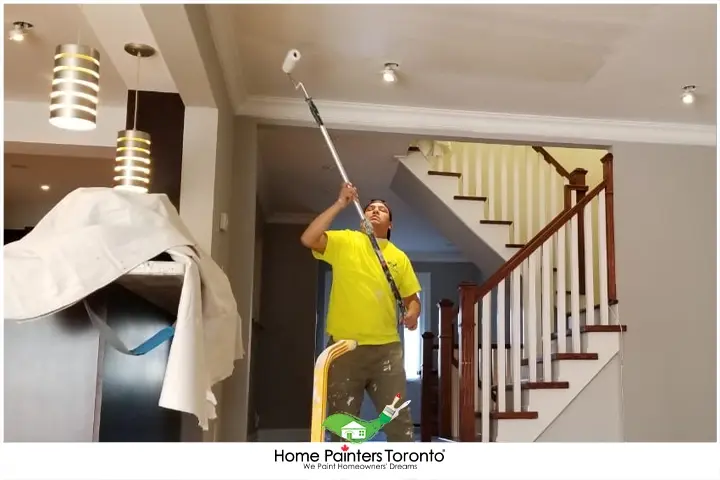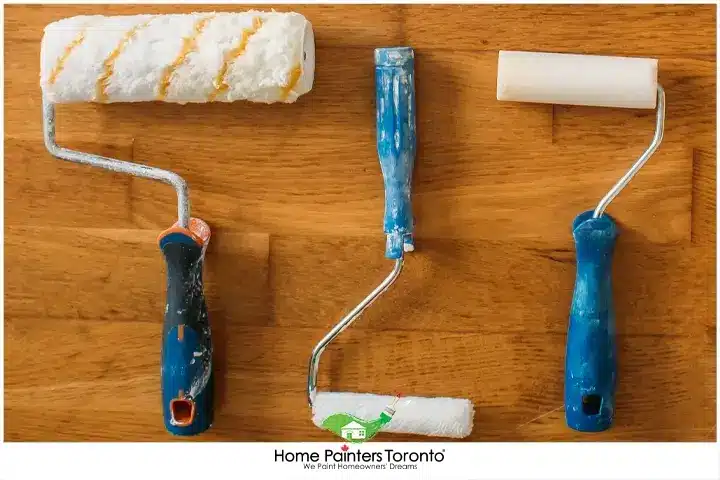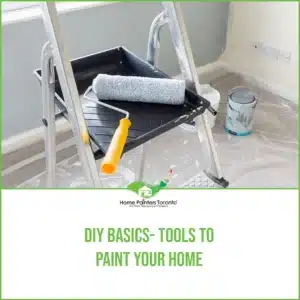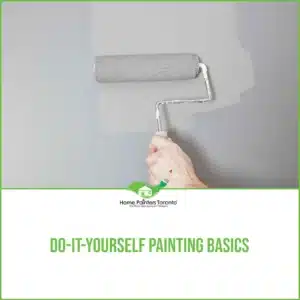
Whether you’re undertaking a small DIY project or planning a large-scale commercial painting job, using a paint roller effectively can significantly boost the quality of your results. Yet, many underestimate the scope of this seemingly simple task.
Painting your home, or even a whole room can be very time-consuming if you do not have the proper tools. The most common applications used are brushes and rollers. In previous blogs, we have spoken about using brushes. The second most used method of paint application, rolling, is useful when painting your house.
Choosing the Right Paint Roller
Your choice of paint roller brush can greatly affect the overall outcome of your painting project. While the type of paint and the surface you’re painting on are critical factors, the size and material of the roller cover (also called a ‘sleeve’) are equally significant.
For instance, a smooth roller cover, usually made of foam or short-nap synthetic fibres, is ideal for painting on smooth surfaces like plasterboard. On the other hand, rough surfaces like textured walls and ceilings require a long nap roller cover, as it can hold more paint and reach into the surface’s crevices better.

How to Use a Paint Roller on a Ceiling
Your ceilings can sometimes be overlooked, but with a refreshing colour and a flawless finish, you’ll give people a reason to look up and admire your handy work.
Changing up the paint colour of a room is a quick and easy way to completely transform both its look and feel. Paint roller is the best choice when you’re looking to quickly cover large areas, like walls.
Before beginning the painting process
Start by ensuring you, and the area, are protected. Remove all furniture from the room that you’ll be painting and lay down drop cloths to protect the floor. Open all the doors and windows in the room that you’ll be working in to allow for proper ventilation. Additionally, before you start working, be sure to put on a face mask, and any other personal protective gear that you may want.
Preparing the paint tray is easy
But there’s an important step you need to remember. Thoroughly stir the paint in the bucket before transferring it to the paint tray. Once it’s stirred, pour it into the deep side of the tray, and you’re ready to start painting.
Trimming the frame
Start by trimming the frame of the room by painting a 3- to 4-inch wide perimeter around all of the wall’s edges using a paintbrush. By no means does this part of the paint job have to be perfect, but it’s difficult to paint these areas using a roller without creating paint buildup, so painting this ahead of time with a brush will help you out
Light and even pressure
With light and even pressure, begin painting starting about 12 inches inward from the edge of the wall. Rather than starting toward the top or bottom of the wall, start with your roller in the middle of the section, and paint using up and down strokes, back rolling the paint on the downstrokes.
Avoid the edges and corners
For now, avoid the edges and corners. After a few up-and-down passes, continue this motion, moving both left toward the edge of the wall and right, in the direction of the rest of the wall that needs to be painted.
Final coat
For the final coat, go back to the edge of the wall that you started at. Starting at the bottom of the wall, roll up to the top, then back down over what you just painted. Every time you get back to the bottom, lift the roller off the wall, then move to the next section. Each new stroke should overlap the previous one, as this will help to smooth the finish.
Paint roller frame
- Paint roller sets typically include a combination of paint trays, stir sticks, rollers and brushes, and depending on the size of the area you’ll be painting and your tool preferences, you can typically find paint roller frames and kits to suit any job. Some include small rollers and trays, while other paint tray kits come packaged with tools in multiple sizes.
- How to put a paint roller on a frame? Paint rollers are very valuable pieces of painting equipment that are necessary for completing large painting jobs. One task that is necessary when using paint rollers on frames is to remove the roller cover and replace it with a new one after the painting sessions are completed. It is a relatively easy task but a necessary one to ensure good painting results.
How to Use a Small Paint Roller

Paint rollers are available in multiple sizes, including small rollers. Small paint rollers are best when painting woodwork and tight spaces, such as along the edge of a wall or ceiling or along trim. Small paint rollers are available in 4-inch and 6-inch widths.
- Begin applying paint to the surface. Roll the mini roller over an area that covers about 12 inches three to four times to cover the area. Move on to the next section.
- Add more paint to the small roller as needed. Now that the roller cover is wet, you only need to dip it into the paint two or three times, as opposed to five or six times on a dry cover.
Professional Paint roller
Quality professional paint rollers trusted by The Idaho Painter and the Paint Life Crew. Paint roller that will give professional results and last. Paint trays and paint rollers are for sale $10.00.
What Are The Advantages of Using a Roller?
Using a roller will help you fill in the large spaces more efficiently and effectively
- • Firstly, it saves you time. You can roll 5-10x faster than using a paintbrush.
- • It allows for a more consistent finish than using a paintbrush.
- • Rollers allow you to concentrate on larger areas without worrying about brush strokes, streaking, or dripping paint.
- • Rollers also save you from having to do more coats of paint, again saving you time and money.
Use High-Quality Equipment.
Buying high-quality equipment may have a larger upfront cost, but the result produced from high-end tools is worth a few extra dollars to most homeowners. Buying each tool individually instead of purchasing an all-in-one kit usually means the tools should:
- • provide a better finish
- • prevent damage to your home
- • last longer so you don’t have to buy new ones every time you start a new project
Remember:
You do not need to buy every painting tool imaginable if you do not plan to do a lot of house painting in the future. Regardless of how much you plan to paint, you will need to invest in the following items:
- • A high-quality roller pin- check out your local hardware store for help picking out a roller pin.
- • An extension pole will help you reach the ceilings and uppermost parts of the walls that you might not be able to reach with a regular pole. Be sure that the extender is tightened properly before painting so that slipping does not occur, leading to messy paint splatters.
- • A good roller cover (otherwise known as a roller sleeve) is crucial for painting walls and large spaces.
It is possible to buy less expensive, disposable covers for your roller; however, high-quality rollers hold paint more effectively. These covers are slightly more expensive than the disposable ones but are more absorbent leading to less streaking. They are reusable leading to savings over time. Rollers come in several sizes:
- • 1/2 in a nap for flat paint on walls and ceilings
- • 3/4 inch nap for rough surfaces (popcorn ceiling/stucco)
- • 1/4 inch nap for satin/semi-gloss paint
However, for larger areas, it is common to use a paint tray. Some painting contractors prefer to use 5-gallon buckets with about ⅓ of a can of paint in along with a paint screen. Paint screens are useful tools that allow you to get just the right amount of paint on your roller, and prevent accidental messes. Whenever you need to leave your roller for a few hours or a lunch break, simply cover the paint bucket with a plastic garbage bag and your paint should not dry out.
How to Paint With A Roller
Step 1: Cutting In
Foremost, before you start painting with a roller be sure that you remember the “cutting in” step. “Cutting in” allows you to get the hard-to-reach areas like corners, trim and baseboards that you will not be able to paint with a roller. Click here to read our handy step-by-step article on “cutting in.”
Hint: Painting with a roller is not difficult, but can be messy. Remember to keep your strokes smooth and confident throughout the whole process.
Step 2: Laying Paint
Start from one end of the wall then move to the other side, line by line. Start by placing your roller about one foot from the top and 6 inches from where you “cut in” earlier.
With long, smooth strokes, begin to lay the paint on the wall. Roll down and up to fill the unpainted wall with paint.
Don’t push too hard or you will leave paint lines and streaks on the wall. Applying too much or too little paint will have less than the desired result.
Step 3: The “W” Painting Technique
Next, using the “W” painting technique, roll back over the already painted areas to create a perfectly blended wall. Roll as close to corners and trim as possible without touching areas that you do not want to paint. You should be able to paint within an inch of the trim, baseboards, and corners.
Step 4: Repeat
Finally, repeat the steps until all of the walls are painted with a smooth, even tone.

Home Painters Toronto Pro Tips
- Try not to take breaks while in the middle of a wall.
It is best if you only start “cutting in” and painting a wall when you know that you have time to finish it. If the paint dries before you have completed the required steps, there will be visible lines where the paint dried and where you started painting again.
- Be sure that you work quickly as you need to keep a “wet edge” that will allow you to blend your strokes.
The wet paint here makes the blending from one stroke to the next seamless, so there will be no paint ridges, flashing or other visible evidence of using a roller or paintbrush.
How to Clean Paint Roller
The task of painting does not stop once the paint is on the wall; your equipment’s care, particularly the paint roller, significantly impacts its longevity and the quality of future painting projects. While it may seem tedious, cleaning your paint roller is a worthwhile investment of time and effort. Here’s our paint roller tips on cleaning paint rollers:
1. Removing Excess Paint
Once you’ve completed your painting task, remove any excess paint from the roller cover. You can do this by rolling it back and forth on an area of your surface where the paint will blend in or by scraping it gently against the edges of your paint tray. This action prevents waste and reduces the amount of paint that needs to be cleaned off.
2. Rinsing the Paint Roller
The next step depends on the type of paint you’ve used. For water-based paints like latex or acrylic, all you need is a steady flow of warm water from a tap or a hose. For oil-based paints, a specific cleaning solvent, usually mineral spirits, will be necessary.
Hold the roller under the running water or solvent, and use your fingers to work the mixture through the nap of the roller cover, squeezing gently to release the paint.
3. Thorough Cleaning
To ensure that the roller cover is thoroughly clean, consider using a roller spinner or a paint roller cleaning tool. These devices can rapidly spin the roller cover, using centrifugal force to expel the residual paint and water.
4. Drying and Storage
Once the water runs clear, shake off the excess moisture from the roller cover. Stand it on its end or hang it up to air dry completely in a well-ventilated area. Avoid laying the roller cover on its nap to dry, as this can cause it to deform and impact its application quality in the future.
Store your cleaned, dried paint roller in a cool, dry place, protected from dust and direct sunlight.
More Interesting Blogs Related to
“How To Use a Paint Roller”
The ideal method for quickly and effectively painting your home yourself is to use a combination of roller painting and cutting like professional painters in Toronto do. This method typically provides the cleanest, most professional look with the least amount of time. While home painting is still a time-consuming job, having the proper tools and knowledge will make a huge impact on the time and energy required to make your home look exactly how you want it.
If you determine that the job is too big for you to tackle on your own, we are experts at interior home painting. To make sure your home is painted properly with the least mess, let our experience do the heavy lifting. Please call us NOW at 416.494.9095, or email us at [email protected] to get a free quote for your interior house painting project today! And don’t forget to follow us on all our social channels below!





